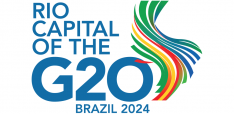Decoding the Humanitarian-Development Nexus in DR Congo

World Vision’s five lessons about the nexus delivering change in fragile contexts.
More than one quarter of all people live in countries affected by fragility, conflict and violence. Such countries are some of the most dangerous places in the world to be a child: places with high levels of extreme vulnerability, poverty and deprivation. For decades the international community has wrestled with how best to make lasting change in such contexts. Yet, the number of vulnerable girls, boys, women and men living in these complex and fragile contexts continues to increase. Without a roadmap to sustainably address the drivers of fragility, humanitarian need continues to grow as at rate that has far outpaced the international community’s capacity to respond.
The international community has made significant global commitments to get better at working across the humanitarian, development and peacebuilding sectors in order to contribute to a brighter future for the most vulnerable people living in fragile contexts. But key questions remain- how to do this and how can those in power best support the efforts of non-governmental organisations, their partners and the affected communities?
World Vision is working hard to align our humanitarian, development, peacebuilding and advocacy efforts to address fragility. Based on more than 70 years of working in fragile contexts, we’ve developed and piloted a Fragile Contexts Programme Approach [link] to support efforts to expand and deepen impact across this nexus of programme areas. As part of learning how we can have the most impact in fragile contexts, we reviewed a pilot project in the Democratic Republic of Congo (DRC), one of the most fragile countries in the world. Five things the case study reinforced included:
- Regular analyses of fragile contexts we work in is a non-negotiable foundation of programming. It should be done at multiple levels and involve local communities. Programmes must then be based on this, looking at ways they can enable communities not only to survive, but also to adapt to challenging circumstances and be able to thrive over the long term.
- Programmes need to be flexible and adapt as these situations change. This not only involves doing regular context analysis but checking the understanding of key needs and their root causes, so that they are responded to as much as possible (including through exploring partnering options). We need to anticipate what those changes may be and plan for what is likely to happen.
- It is critical for programming to be community-driven and this takes time. This pilot was undertaken in Rutshuru in the east of DRC, which has a long history of instability, including the presence of armed groups and insurgent attacks. Nevertheless, this project drew on World Vision’s long-term presence, and good relationships with communities. It fostered strong community participation during project design, context analysis and implementation to ensure accountability and sustainability.
- We must be willing to take on and manage risk in fragile contexts. Fragile contexts are inherently volatile, and agencies need to respond safely in such environments. Acknowledging this increased risk, we then need to increase investment in security risk management.
- Donors need to understand the complexities of operating in fragile contexts and provide appropriate funding and flexible ways of working to match these complexities. It’s important they visit project sites in fragile contexts regularly.
Children in fragile contexts live on a knife edge and are extremely vulnerable to violence, exploitation, abuse, and neglect. As a holistic, child-focused agency, World Vision is committed to improving our work in these contexts based on such lessons learned. Given that by 2030, 80% of the world's poorest people will be living in places where children are at risk, we can do little else.
Sarah Pickwick, Senior Conflict Adviser, World Vision.
This was reposted with permission from World Vision.
Images: MONUSCO Photos via Flickr (CC BY-SA 2.0)


